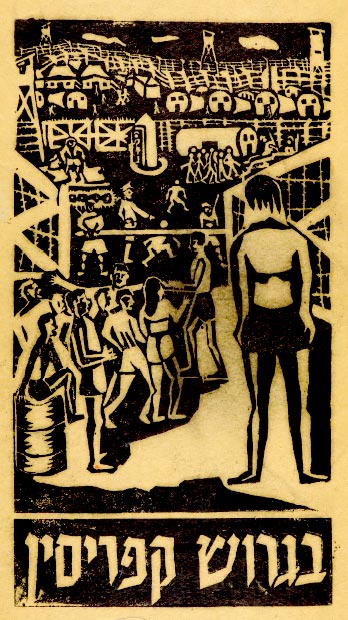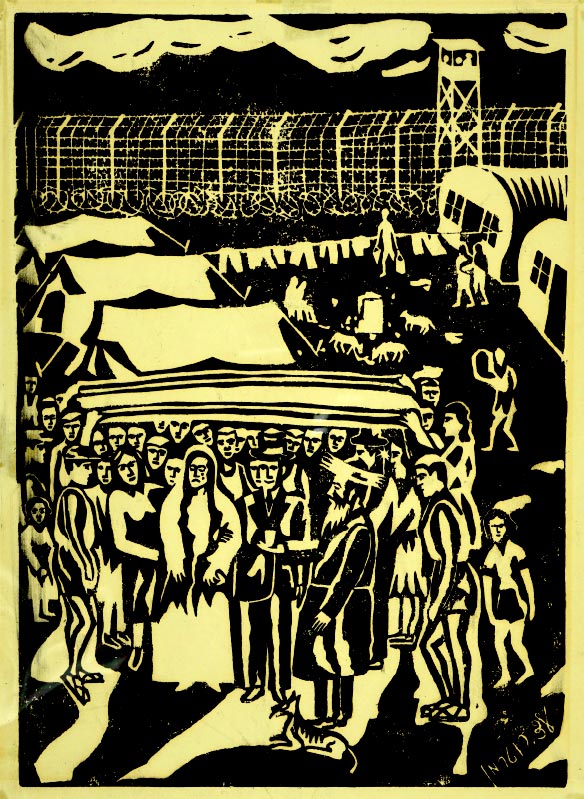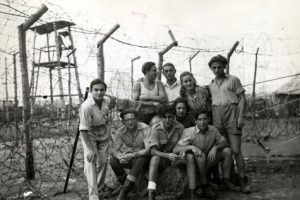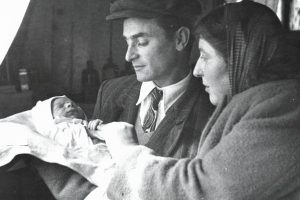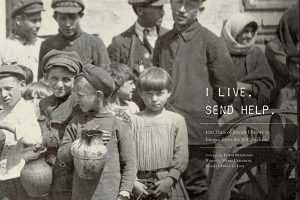
Cultivating Artists on Cyprus: The Rutenberg Seminar
Discover original prints by Cyprus internees taught by renowned Israeli artist Naftali Bezem.
In August 1946, the British government initiated a policy of deporting Jews who tried to enter Palestine illegally, in violation of the immigration quotas for Jews set by the White Paper of 1939. These refugees, the majority of them Holocaust survivors, were caught in limbo, marooned on the British-controlled island of Cyprus and housed in internment camps. JDC offered its assistance. By the time the internment camps had closed in February 1949, JDC had spent approximately $2 million to assist some 55,000 refugees during their 30 months of internment. This support included supplementary food rations, clothing, medical care, vocational training programs, educational programs and religious materials. It also included art classes.
A record of these classes exists in the form of an album of linocuts and additional prints, currently housed in the JDC Archives. The images capture daily life in the camps, ranging from mundane activities such as relaxing and eating, to religious ceremonies such as marriage and the blessing of the new moon, each artist’s style coloring the scene at hand. Printed 120 times on a specially constructed printing press, the album is titled Begerush Kafrisin (Exile in Cyprus). The title recalls the collective Jewish memory of the Babylonian Exile centuries ago, which no doubt resonated with the Jewish refugees. This particular album was presented to JDC by the pupils of the Rutenberg Seminar, as a token of thanks.
The Rutenberg Seminar was founded in July 1947 by the Pinhas Rutenberg Educational Trust in conjunction with the Youth Department of the Zionist Executive. A “Youth Center” in Palestine was established, followed by the development of a similar institute in the refugee camps of Cyprus. On Cyprus, diverse courses were taught, including Hebrew, civics and psychology, as well as Bible, Jewish philosophy and history. The seminar established an art class, taught by Naftali Bezem, a young graduate of the famed Bezalel School of Arts and Crafts in Palestine. Bezem went on to become a renowned artist himself, exhibiting internationally as a painter, muralist, and sculptor. In 1964, his paintings were featured in the Art Israel exhibit, organized by the Museum of Modern Art.
“Cyprus is one stop on the road of suffering on the way to the land of Israel. It means thorny barbed wire fences, forced idleness, and degeneration. Even in this existence there was life. Friends from the camp in Cyprus tell about this life in this book.”
The linocuts appear an appropriate technique to portray the stark reality of life on Cyprus. Caught in an almost purgatory, the contrasting colors of the images capture the harsh terrain and bleak atmosphere of the camps. However, by choosing to illustrate their surroundings, detainees breathed life back into the camps. In the image below, barbed wire, usually brittle and tangled, seems to be unraveling before our eyes, wisps of smoke dancing with the waves, almost unfolding to let the weary travelers pass and enter the promised land. Thanks to the programming and aid from JDC, creativity and exploration arose in the camps, turning the monotony into a powerful source of inspiration. Art students’ simple and severe lines morphed into whimsical, other worldly scenes; the hopes and dreams for an imminent future in a new land.
Also See
Compare and contrast the prints to actual photographs of the detention camps, by viewing the JDC Archives Cyprus photo gallery.
